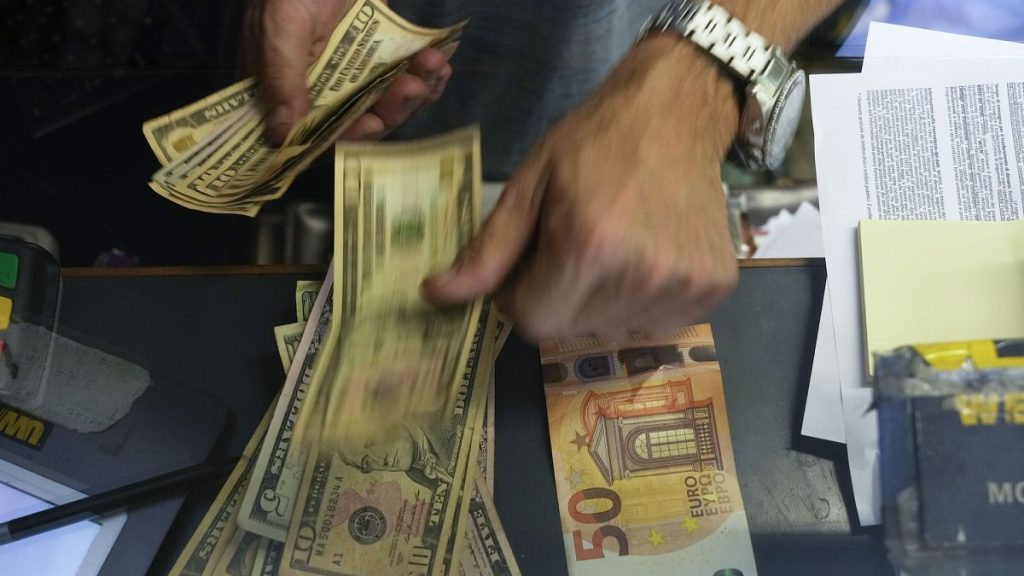The euro exhibited relative stability against the US dollar on a recent Tuesday, despite facing renewed tariff threats from US President-elect Donald Trump directed at imports from Canada and Mexico. In a post on Truth Social, Trump announced his intention to impose a significant 25% tariff on these neighboring countries, leading to sharp declines in the values of the Canadian dollar and Mexican peso, which both fell to multi-year lows. Analysts suggest that these tariff threats may trigger trade negotiations and could result in heightened volatility in the currency markets in the forthcoming months. Although the euro saw an initial dip against the dollar, it managed to recover and finished the session flat, holding steady at just under 1.05 in the early Asian trading hours on Wednesday. However, it is noteworthy that the euro had recently depreciated significantly, reaching a two-year low of 1.0330 last Friday, reflecting a decline of 6 US cents since Trump’s election victory on November 5.
There are several factors that may contribute to continued pressure on the euro against the dollar in the near future. One influential aspect is the potential for trading partners to engage in currency hedging due to the heightened risk posed by Trump’s tariff threats. This would involve exchanging local currencies for US dollars to mitigate the risk of devaluation in their assets, resulting in increased demand for the dollar and consequently putting more downward pressure on the euro. Furthermore, the Federal Reserve’s recent release of meeting minutes suggested a preference for a cautious approach to interest rate cuts, stemming from the resilience of the US economy. Some officials hinted at a pause in rate cuts if inflationary pressures persist, which could reinforce a stronger dollar and exacerbate the euro’s downtrend.
The eurozone’s economic fundamentals do not appear robust enough to counter the dollar’s upward momentum. The European automotive sector was notably affected by Trump’s tariff announcements, leading to a souring of sentiment across the continent as all major equity indices ended lower. Trump has historically expressed a willingness to impose tariffs of 10% on imports from other nations and a staggering 60% on Chinese goods. Implementation of such tariffs may further weaken the euro, as it would be essential to support European exporters in a challenging trade environment. Additionally, the imposition of tariffs on China could have a ripple effect, dampening Chinese demand for European products and indirectly impacting the eurozone economy.
Market analyst Kyle Rodda from Capital.com foresees additional weakness for the euro in light of these circumstances. He emphasized that if the Trump administration continues its aggressive tariff trajectory, both the euro and Chinese yuan could experience further depreciation. Rodda also cautioned that it might only be a matter of time before Trump directs more harsh criticism at major European economies via social media, heightening market uncertainties and anxieties.
In the near term, however, there may be opportunities for the euro to rebound slightly. Investors are keenly awaiting the release of the eurozone’s flash Consumer Price Index (CPI) for November, which is anticipated to rise to 2.3%, up from 2% in October. An increase in inflation could prompt a more hawkish stance from the European Central Bank (ECB), potentially providing some support to the euro. Additionally, US government bond yields have recently retreated from a four-month high, attributed to Trump’s nomination of hedge fund executive Scott Bessent as Treasury Secretary. Bessent’s perceived less aggressive stance on tariffs might ease global trade tensions, and a slowdown in the momentum of the dollar may provide temporary relief for the euro, as there is often a correlation between currency trends and bond yields.
Overall, the euro is facing multifaceted challenges against the backdrop of shifting political dynamics and trade policies instigated by the incoming Trump administration. With the possibility of aggressive tariffs looming, the eurozone could experience significant economic repercussions, compelling the single currency to navigate a path of continued fluctuation against the dollar. As global markets react to evolving trade negotiations and monetary policies, trader sentiment and economic indicators will play a crucial role in determining the euro’s stability and potential recovery in the forthcoming period.














